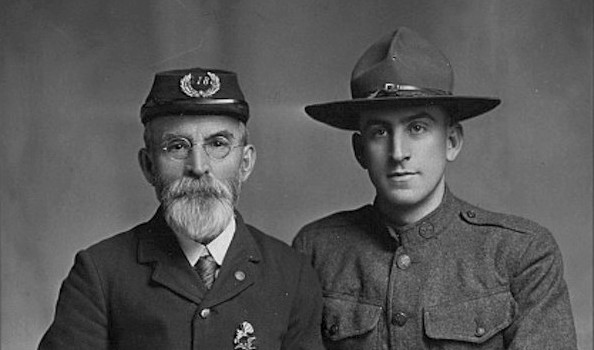9 Tips for Researching Your Military Ancestors
This Veterans Day, the U.S. celebrates the brave men and women who have risked their lives serving in the nation’s armed forces. Now is a good time to take a moment to honor members of your family who have served in the military and celebrate their stories in your family tree.

Image: Library of Congress
Military records can be a great source of information to better understand the lives of your ancestors. There are also many other records that can provide clues about your ancestor’s military history. Here are some tips to help you learn more about your military relatives or uncover clues to further your research.
1. Interview relatives
A great place to start is with your living relatives. Ask your family questions about your military ancestors. Do they remember any old stories about your ancestor’s time in the military? See if they have any old photos that show your ancestor in uniform. Carefully examine the photographs and look for any ribbons or service medals.
2. Service records
Compiled service records can provide you with lots of helpful information. Here you will find the person’s name, rank, and military unit. These records may consist of muster rolls, pay vouchers, brief biographical information, and possibly some medical information.
3. Pension records
Military pension records are rich sources of information. Not only might you find your ancestors full name, rank, and company, but also possibly the data and location of enlistment, place of residence, and date of discharge. You’ll find records of payments to veterans and even payments to their widows and heirs.
4. Bounty land warrants
The U.S. federal government provided bounty land for wartime service between 1775 and 1855. If your ancestor served in the American Revolutionary War, War of 1812, the Mexican War, or the early Indian Wars, you may want to take some time to search these records.
5. Census records
Some census records will make note of military veterans. The 1910 U.S. census record asked whether the person was a survivor of the Union or Confederate Army or Navy. The 1930 U.S. census asked if the person was a veteran and what war or expedition they served in. Enumerators of the 1940 U.S. census asked a small sample of people supplementary questions about a person’s veteran status or if they were a widow or child of a veteran.
6. Newspapers
You can discover some very interesting stories in old newspapers. Announcements for births, engagements, marriages, and deaths may also make note of your military ancestor. Obituaries may also contain details about a person’s military service. Sometimes newspapers also reported on events, enlistment notices, or reunions and may include the names of those who were in attendance. You can also check old newspapers for war casualty lists.
7. Draft registration cards
While draft registration cards can hold valuable pieces of genealogical information, it’s important to remember that not everyone who signed up for the draft served in the military and not all men who served registered for the draft. Nevertheless, it’s worthwhile to do a search to see what you may find.
8. Cemetery records and gravestones
Often the gravestones of veterans will bear a military insignia or inscription. Their gravestone will also likely include the person’s branch of service and rank. If they died during battle, they may be buried in a military cemetery.
9. Letters, Postcards & Diaries
Do you have old letters, postcards, or diaries that belonged to your military ancestors? These may give you valuable insight into the lives of your relatives who served in the military.
Have you researched your military ancestors? What records did you find?







 Genealogy Discussions
Genealogy Discussions Genealogy Projects
Genealogy Projects Popular Genealogy Profiles
Popular Genealogy Profiles Surnames
Surnames The Geni Blog
The Geni Blog The World Family Tree
The World Family Tree